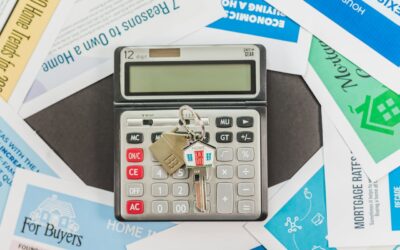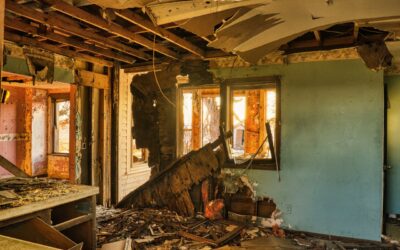Whilst you can’t get a traditional mortgage on an uninhabitable property, you will be able to get another type of loan like a renovation or bridging loan.
Buying an uninhabitable property can be an exciting way to turn a derelict building into your dream home or kickstart a property investment project.
However, financing these properties can be hard, especially as traditional mortgages are not an option. In the UK, mortgage lenders are unlikely to approve mortgages on buildings they deem ‘uninhabitable’.
Here, we talk you through your options.
What Is An Uninhabitable Property?
An uninhabitable property is one that a person is unable to live in. Mortgage lenders usually define “habitable” properties as having:
- A watertight roof
- A functional kitchen
- An indoor bathroom with a working toilet
- Electricity and central heating
- Security (e.g., lockable doors and windows)
Properties that don’t have these features are usually seen as uninhabitable and are therefore viewed as riskier investments for traditional mortgage lenders.
Signs That a Property May Be Uninhabitable
| Issue | Explanation |
|---|---|
| Structural damage | Cracks in walls, bulging brickwork, or unstable chimneys |
| Lack of facilities | No kitchen or bathroom |
| Damp and mould | Damp or excessive mould impacting health and making the structure less robust |
| Asbestos | Health hazard |
| Japanese knotweed | An invasive plant that can damage foundations and affect property value |
| Fire or water damage | Significant destruction affecting safety and usability |
Why Are Mortgages Declined For Uninhabitable Properties?
Traditional mortgage lenders will view uninhabitable properties as high-risk investments.
This is because mortgages are first charge loans. If the borrower defaults, the mortgage lender will sell the property to reclaim their losses. However, uninhabitable properties are hard to sell, making their investment less secure and therefore less appealing.
What Are The Best Finance Options For Uninhabitable Properties?
While traditional mortgages may not be an option, there are other ways that property investors or those wishing to renovate can finance buying an uninhabitable property.
1. Bridging Loans
Bridging loans are short-term, quick loans designed to “bridge the gap” until long-term financing is arranged. These loans are particularly useful for uninhabitable properties because they:
- Have a quicker approval process than traditional mortgages (usually within 2 weeks)
- Focus on the exit strategy (e.g., refinancing or property sale) rather than the property’s current condition
- Can cover both the purchase and renovation costs
| Feature | Details |
| Loan term | Typically 6-15 months (extendable in some cases) |
| Interest rates | Higher than traditional mortgages, often ranging from 0.5%-1.5% per month |
| Repayment method | Lump sum repayment upon exiting (e.g., sale or refinancing) |
| Approval time | Faster than mortgages, often within weeks |
For low-cost bridging loans starting at just 0.95% interest and secured within 2 weeks, get in touch with Blue Square Capital today at hello@bluesquarecapital.co.uk
To secure a bridging loan, you’ll need:
- A clear exit strategy (e.g., refinancing onto a mortgage once the renovation is complete and considered ‘habitable’ or selling the property)
- Renovation plans and cost estimates for the project, including the cost of the property
- Proof of your ability to repay the loan (e.g., income, savings, or other assets to secure it against)
2. Renovation Mortgages
Renovation mortgages, called refurbishment loans, are designed to finance both the purchase and the cost of making a property habitable.
These loans often work as a combination of bridging finance and a traditional mortgage. Once renovations are complete, the loan transitions into a standard mortgage.
3. Second Charge Mortgages
If you own another property, a second charge mortgage will let you to borrow against the equity in that property to fund your project. That way, the lender has a more solid asset to secure the loan against.
This option can give you access to the financing you need, but comes with extra risks, as defaulting could jeopardise both properties.
4. Personal Savings or Family Support
Using personal savings or borrowing from family can be a cost-effective way to finance an uninhabitable property.
However, make sure you have clear agreements in place to avoid misunderstandings.
How To Finance An Uninhabitable Property
1. Evaluate The Uninhabitable Property’s Condition
Before going ahead with buying an uninhabitable property, it’s a good idea to commission a professional survey.
This will help you:
- Understand the scope of renovations required
- Budget accurately
- Address lender concerns before they come up
2. Engage A Specialist Broker
Working with a loans broker experienced in uninhabitable properties can:
- Help you find lenders that are willing to finance your project
- Make the application process more simple
- Increase your chances of approval
3. Prepare Detailed Renovation Plans For The Uninhabitable Property
Lenders will want to see clear documents laying everything out, so some prepared. These should include:
- Renovation costs and timelines
- Planning permissions (if needed)
- Potential property value post-renovation
4. Apply for Finance
Submit your application with all documentation. For bridging loans, focus on showing a viable exit strategy that tells the lender exactly how you plan to repay the loan.
5. Complete Renovations and Refinance
Once the property is habitable after you’ve renovated it, refinance onto a traditional mortgage or sell the property to repay the loan.
See our guide around: How to remortgage after a bridging loan.
Additional Things To Consider
Unexpected Costs
Budget for hidden surprises, like:
- Extra structural repairs that you might find during renovations
- Professional fees for asbestos removal or damp proofing
- Planning permission delays
Planning Permissions
Major renovations may need approval from your local council. Confirm these before starting work to make sure you don’t have to undo any of your work. Ideally, get planning permission before applying for the loan at all.
Project Management
Hiring a project manager can help:
- Keep the project on schedule
- Avoid common renovation mistakes
- Manage contractors and budgets effectively
Buying Uninhabitable Properties: What Are Your Options?
While securing a mortgage for an uninhabitable property can be tough, there are other options out there. Options like bridging loans, renovation mortgages and second charge mortgages are all viable options, as long as you know what to look for.
That way, you can soon turn a derelict house into a valuable asset.
For low-cost bridging loans starting at just 0.95% interest and secured within 2 weeks, get in touch with Blue Square Capital today at hello@bluesquarecapital.co.uk


